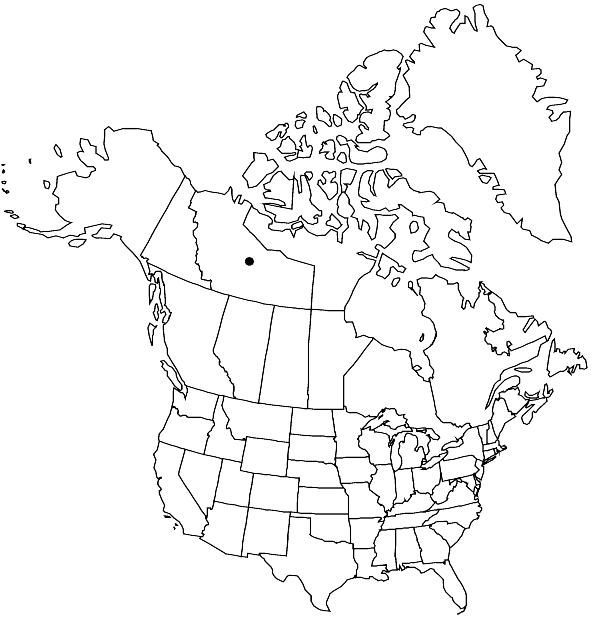Coscinodon arctolimnius
J. Hattori Bot. Lab. 42: 446. 1977 (as arctolimnia),.
Plants 5–10 mm, dark black-green. Leaves ovate-lanceolate, (0.8–)1.5–1.8 × (0.3–)0.6–0.8 mm, margins incurved distally, apex often cucullate, awn 0.3–0.5 mm or absent, lamina 2-plicate, extending from apex to base; basal juxtacostal laminal cells short-rectangular, 19–33 × 9–13 µm, evenly thick-walled; basal marginal laminal cells quadrate to short-rectangular, 13–27 × 9–13 µm, evenly thin-walled; medial laminal cells patchy 2-stratose; distal laminal cells 2-stratose. Sexual condition dioicous. Seta 0.3–0.5 mm. Capsule immersed, ovoid to campanulate; peristome absent.
Habitat: Mineralized siliceous rock
Elevation: low elevations (160 m)
Distribution

N.W.T., Asia (Mongolia, Pakistan).
Discussion
Until 1996, Coscinodon arctolimnius was considered to be endemic to the eastern shore of Great Bear Lake in the Northwest Territories of Canada. When he first described it, Steere suggested that the species evolved in that site as a result of radiation-induced genetic mutations in a population of C. cribrosus. However, with the discovery of a new subspecies (R. I. Hastings and H. Deguchi 1997), from both Pakistan and Mongolia, it appears that the species has a much wider distribution. Although undoubtedly closely related to C. cribrosus, there is now no reason to assume that C. arctolimnius evolved in North America. It is separated from other North American Coscinodon by its green-black color, cucullate leaf apex (incurved if awned), and absence of a peristome.
